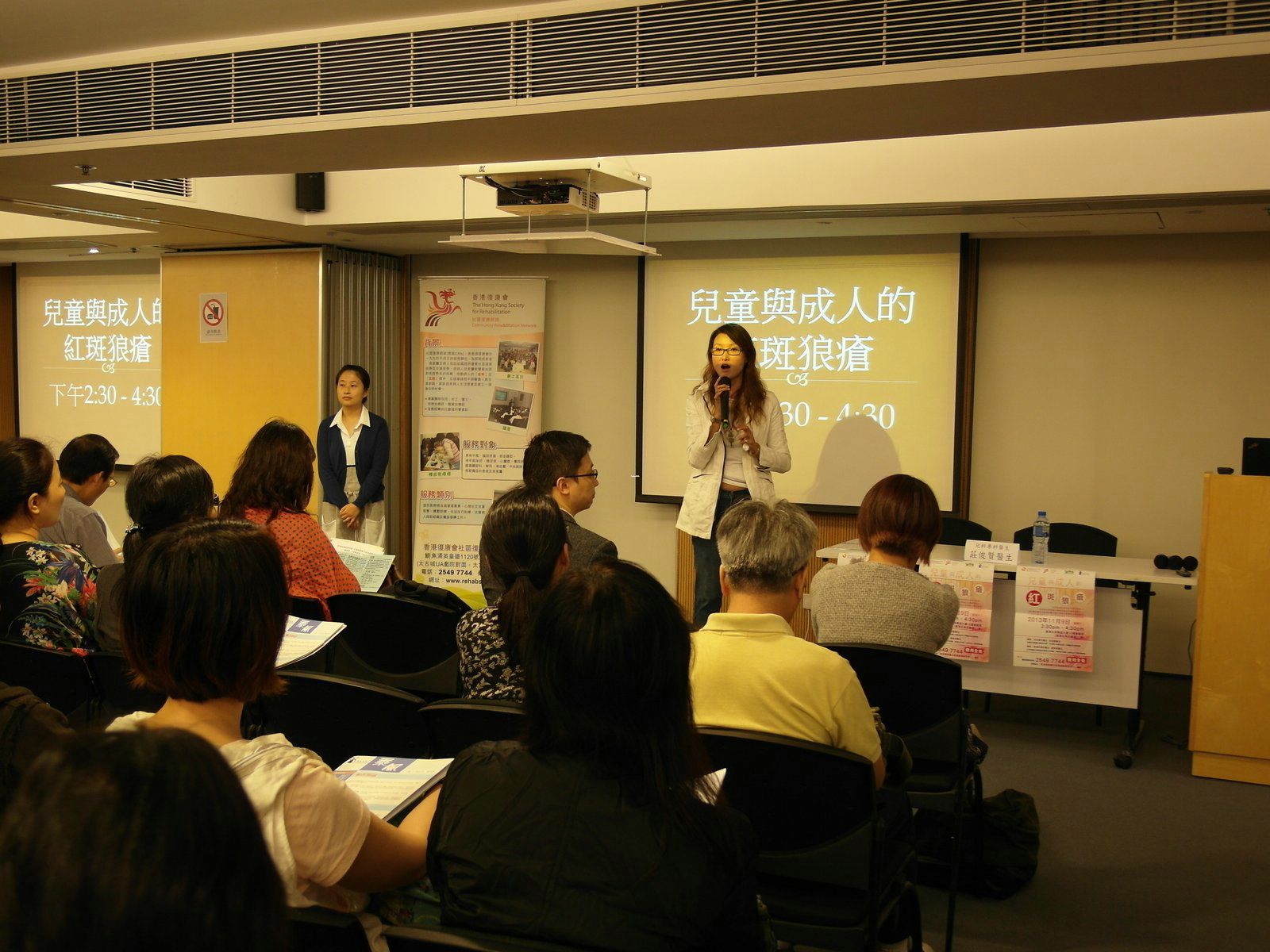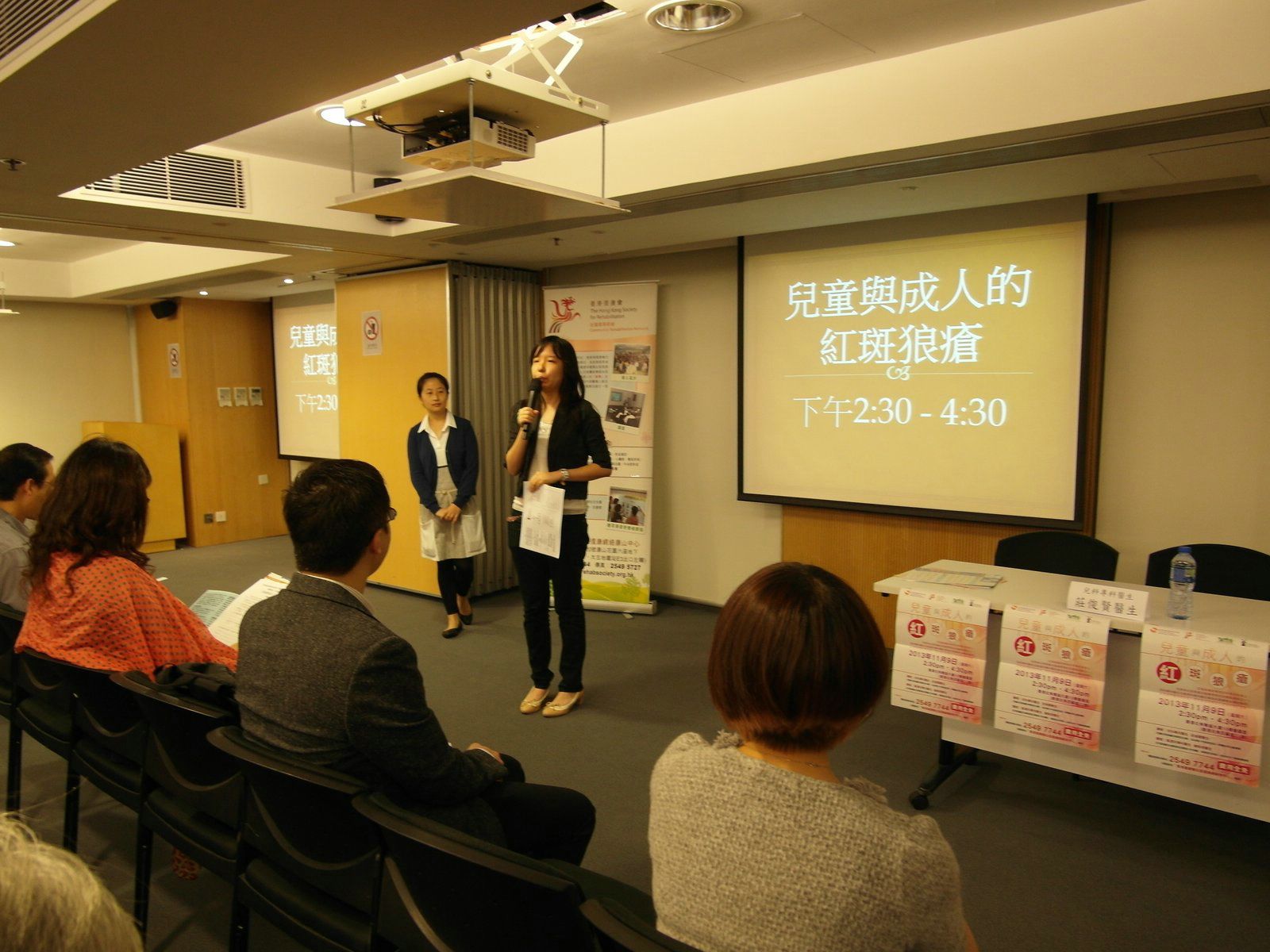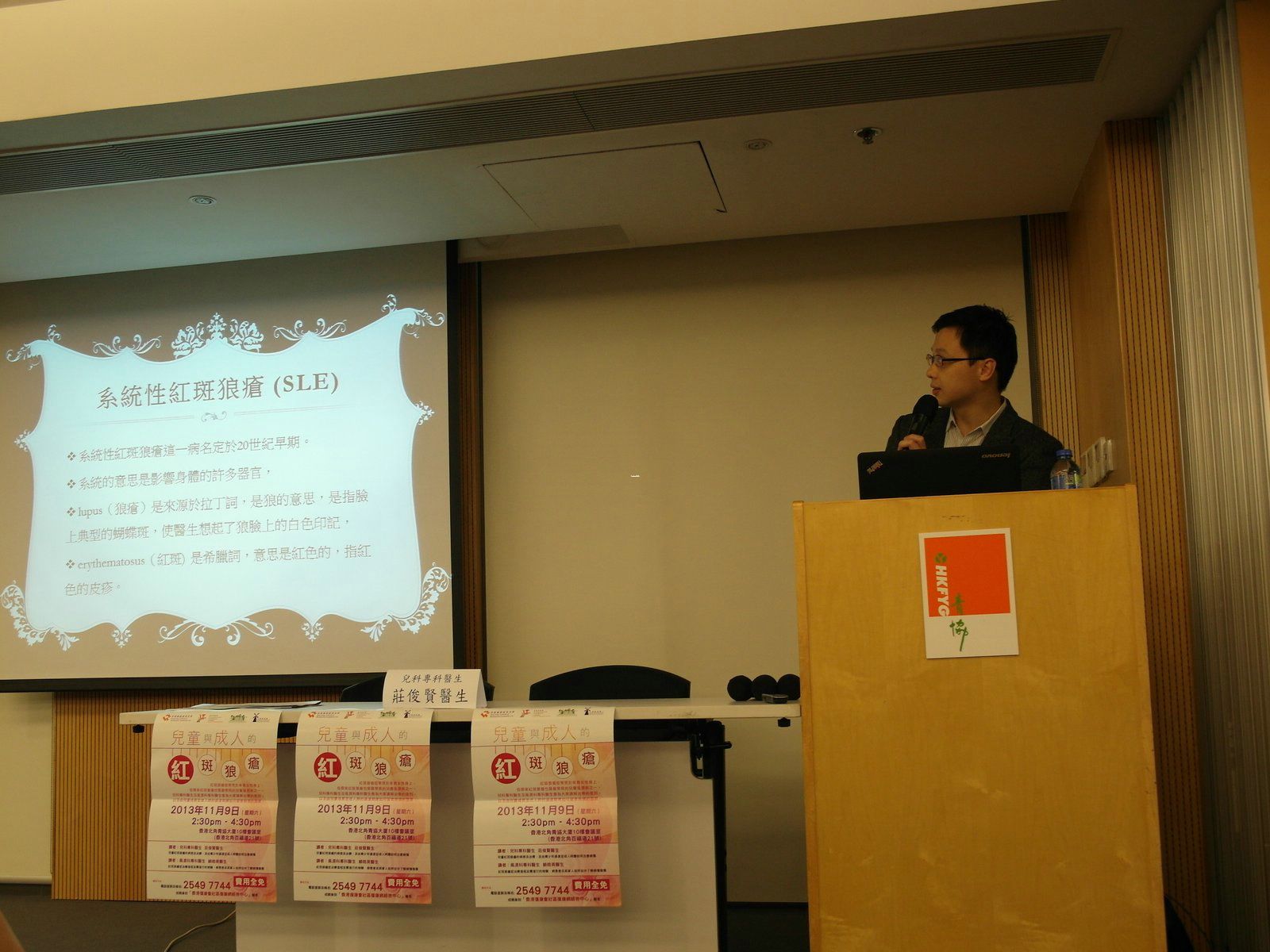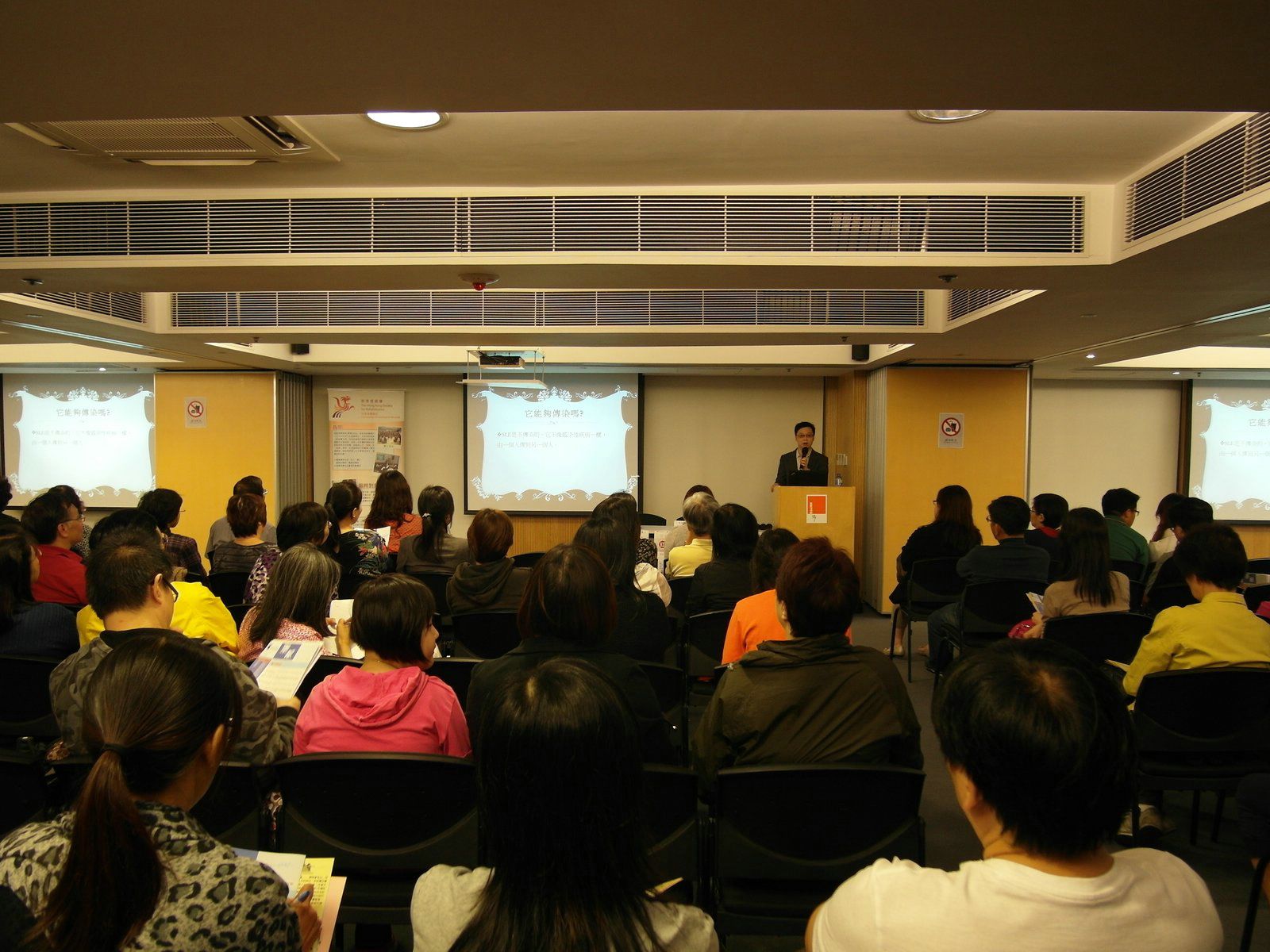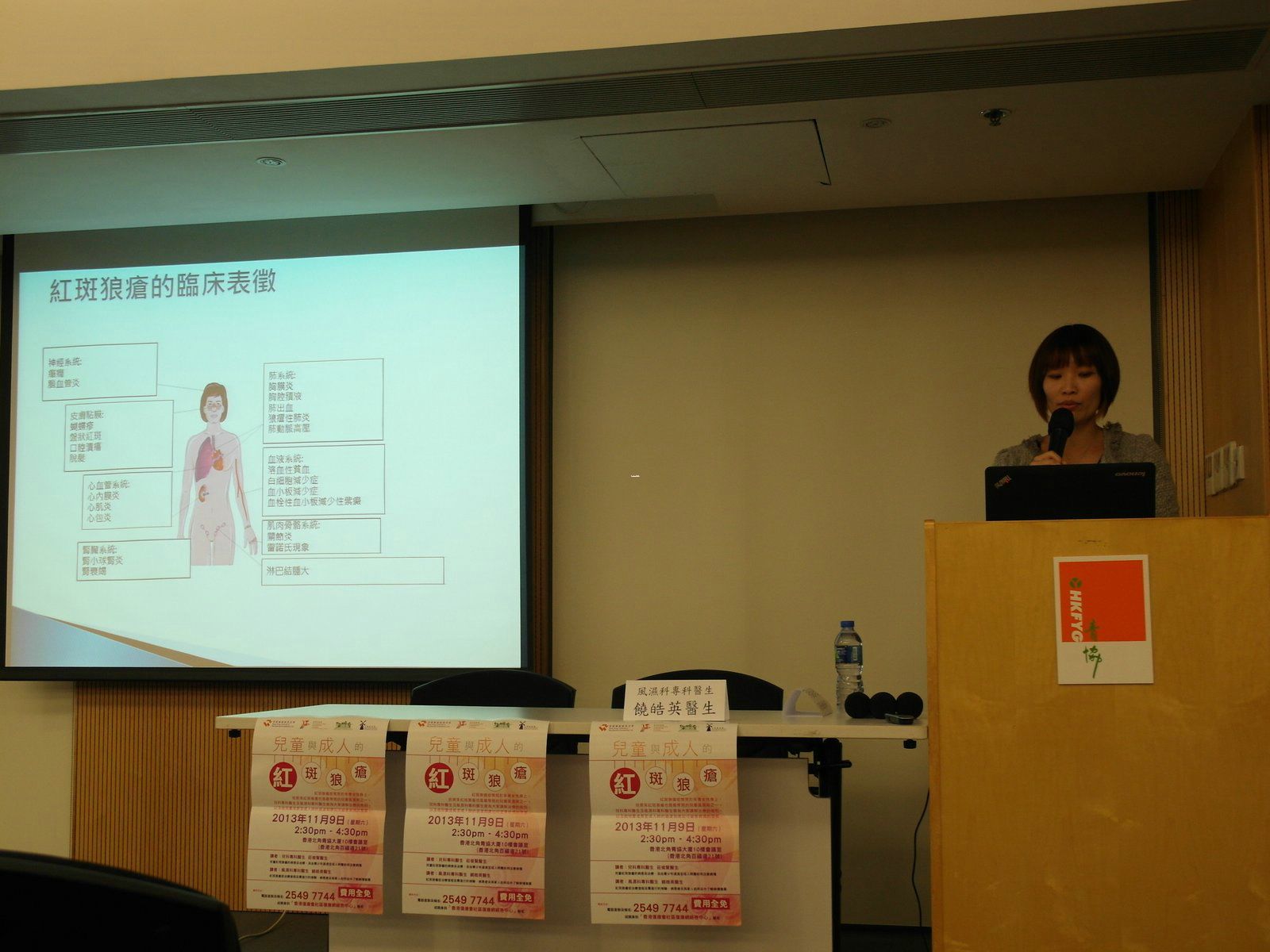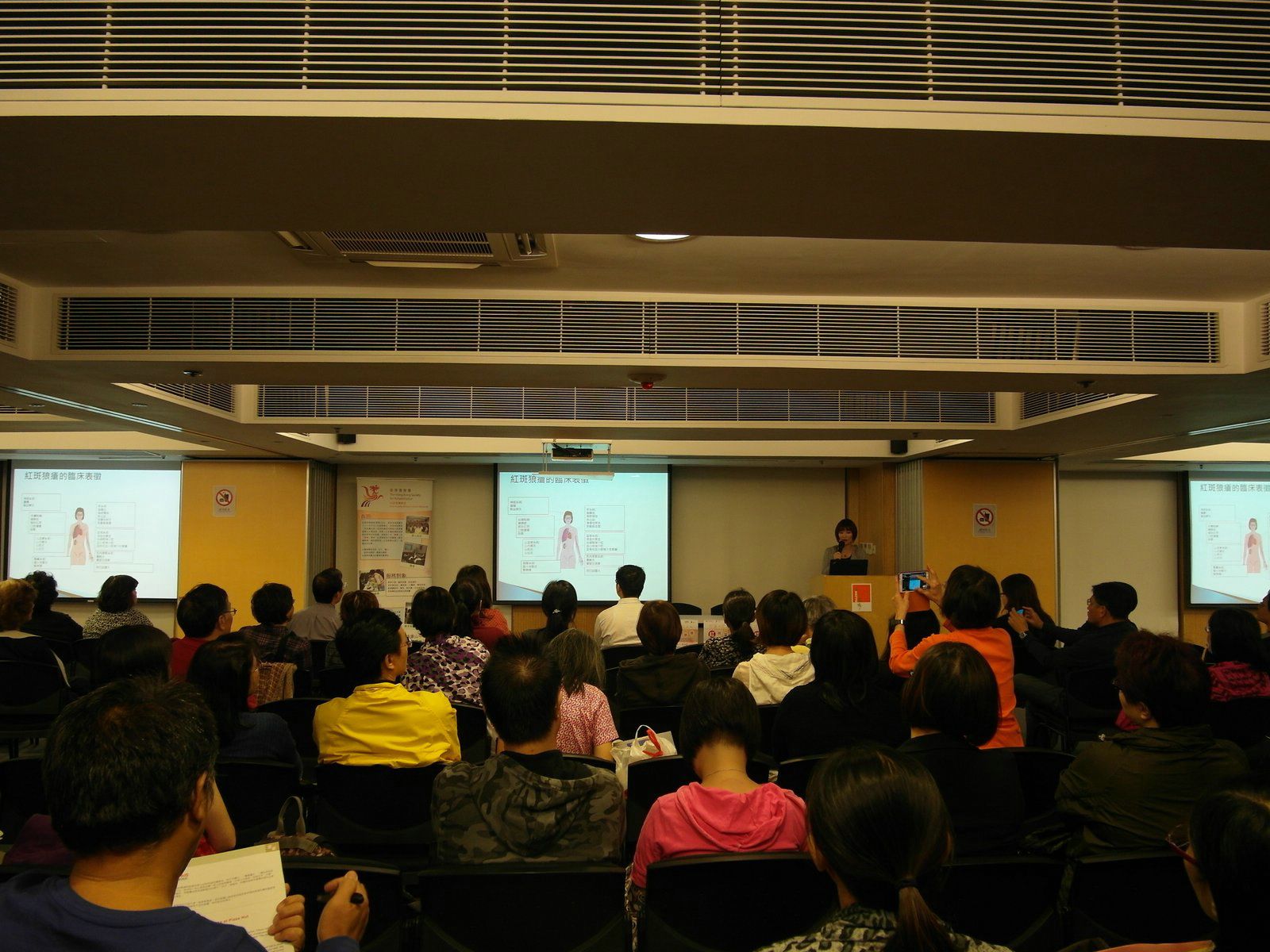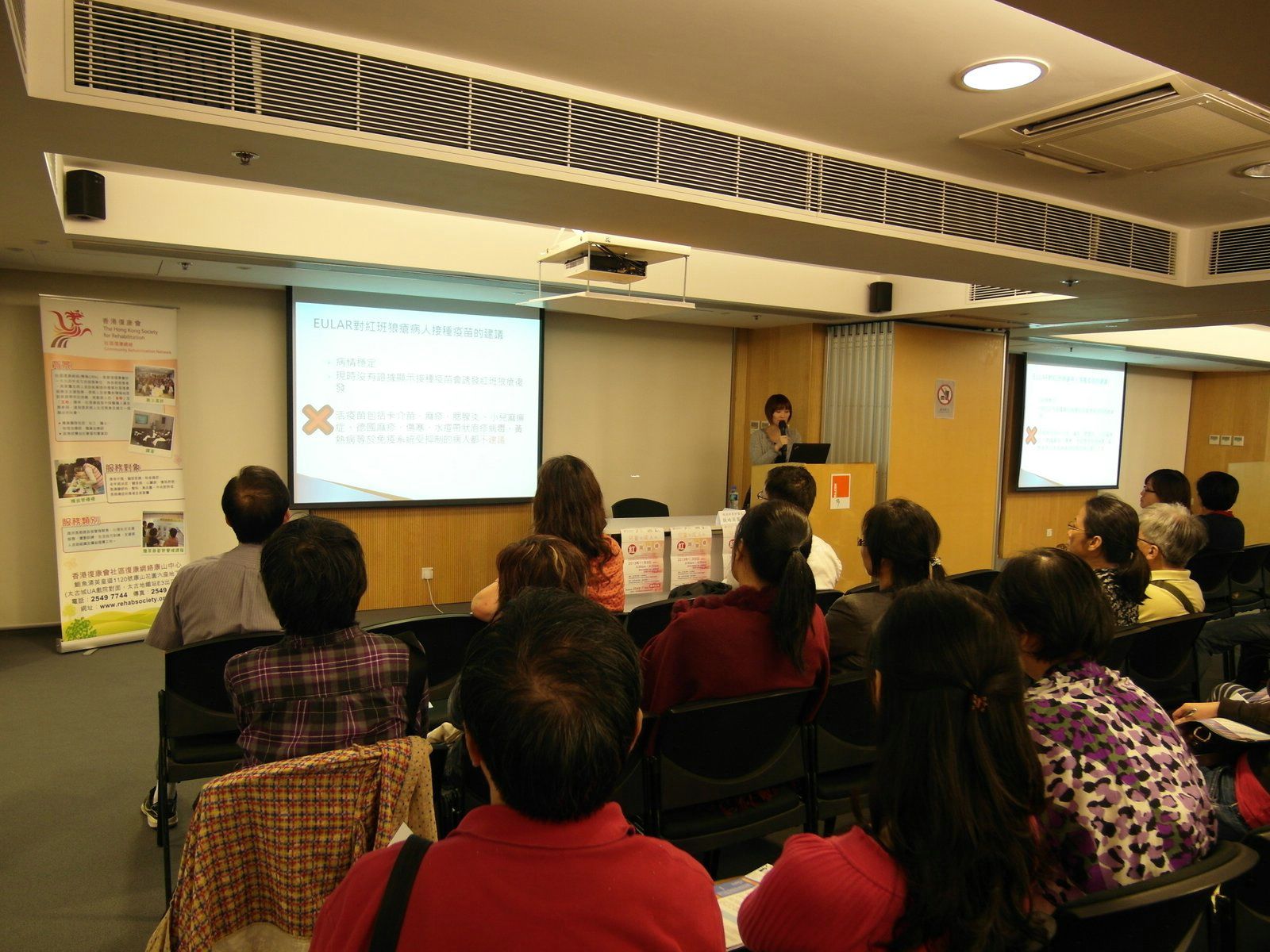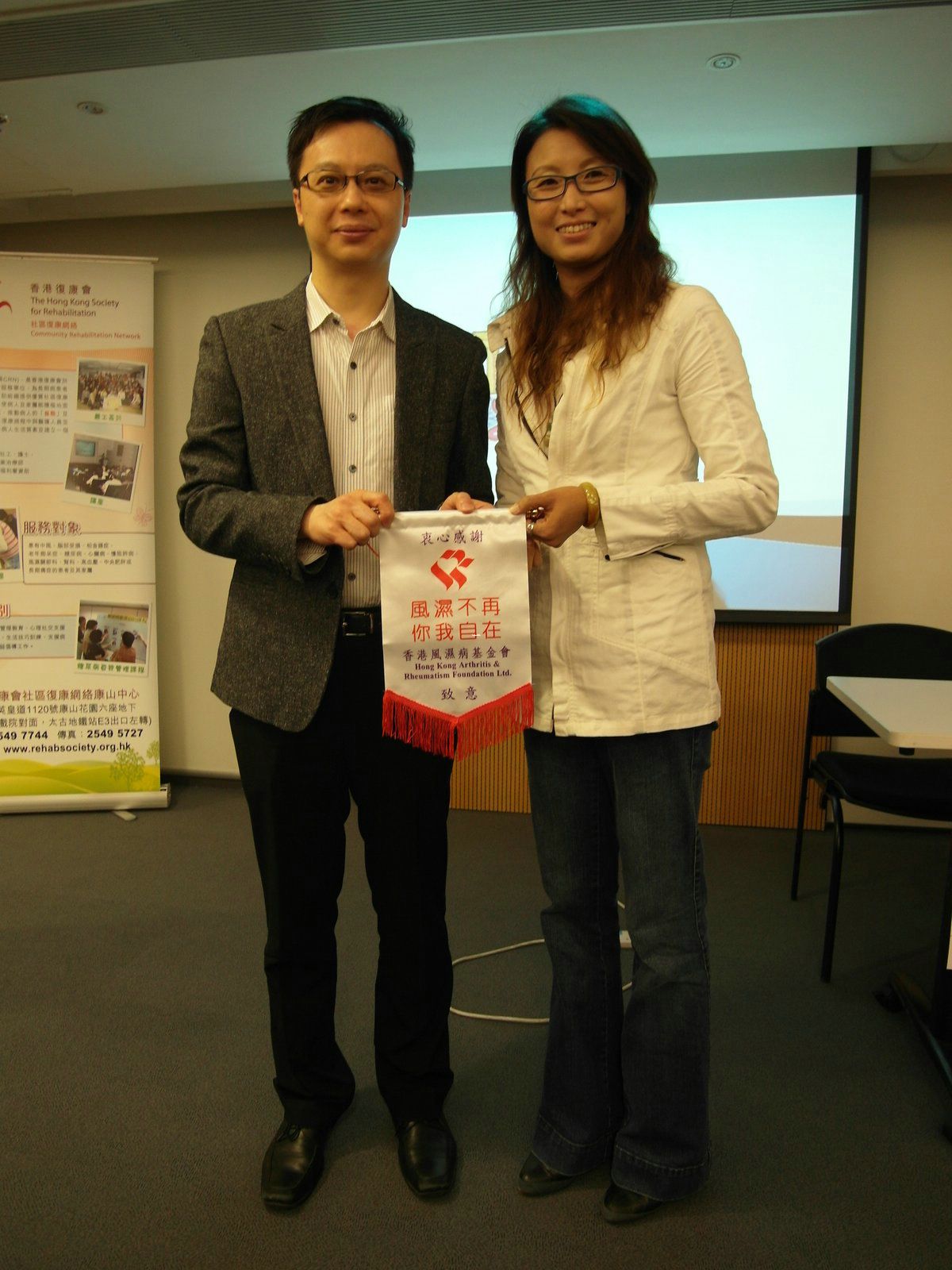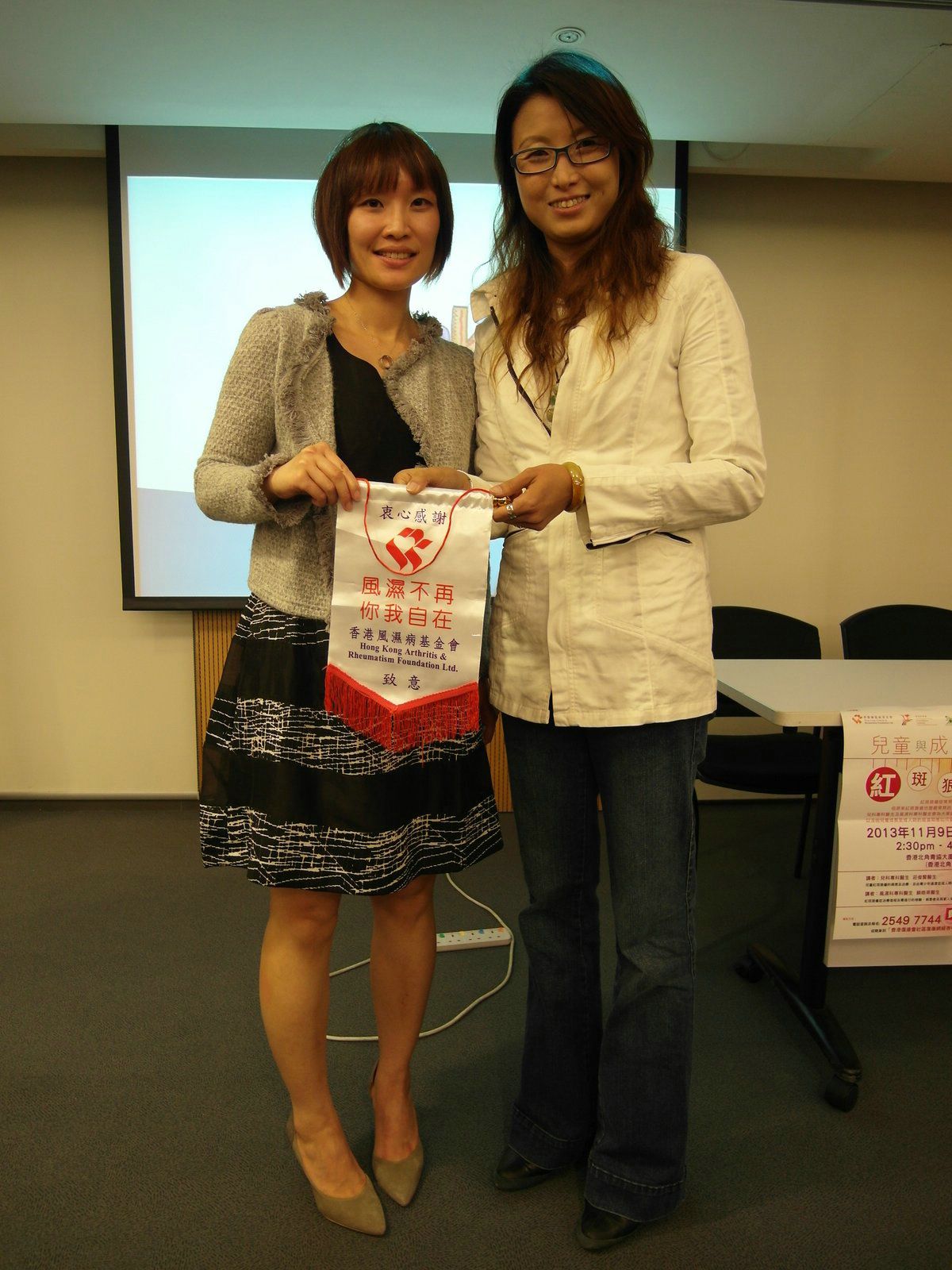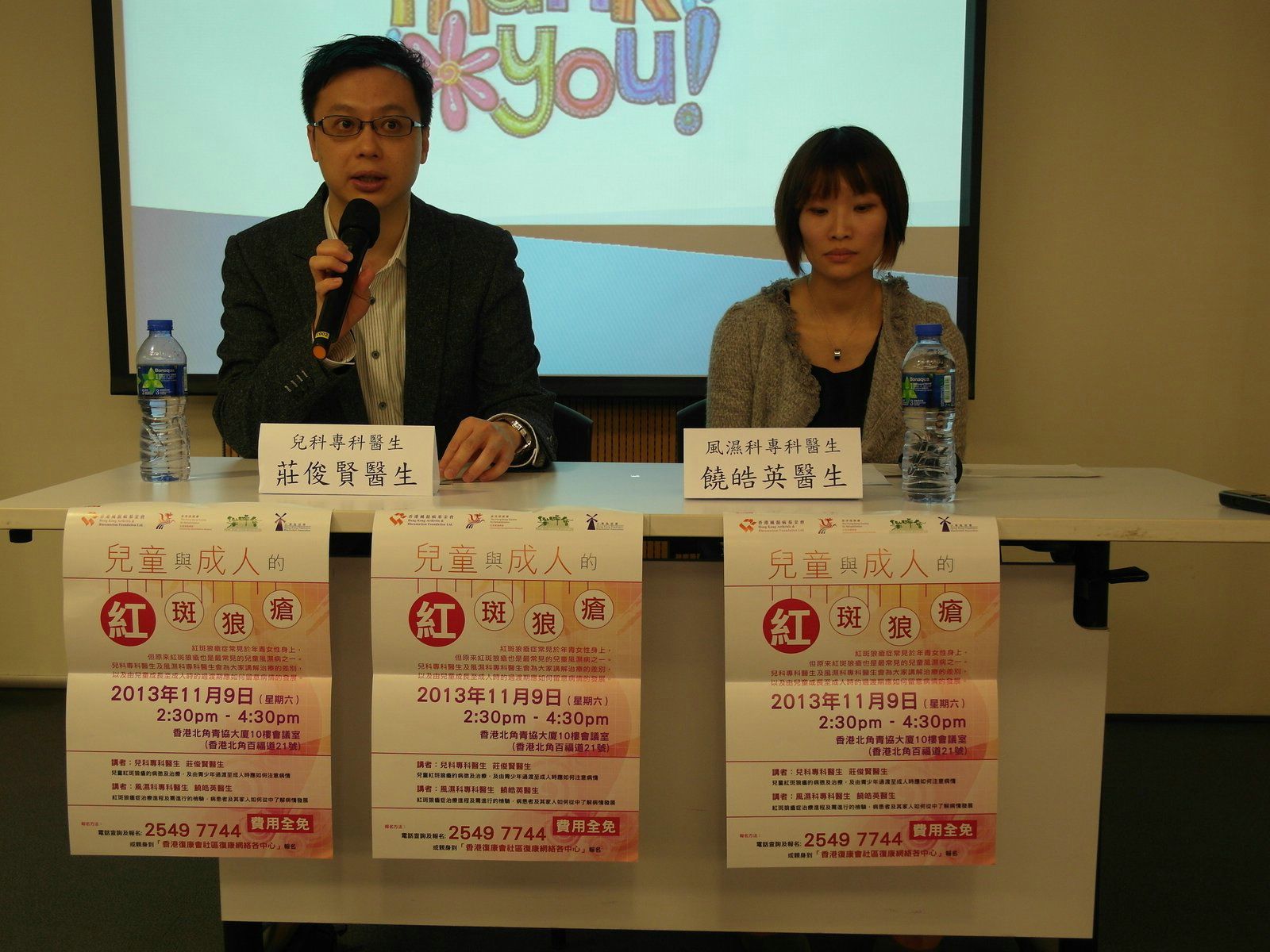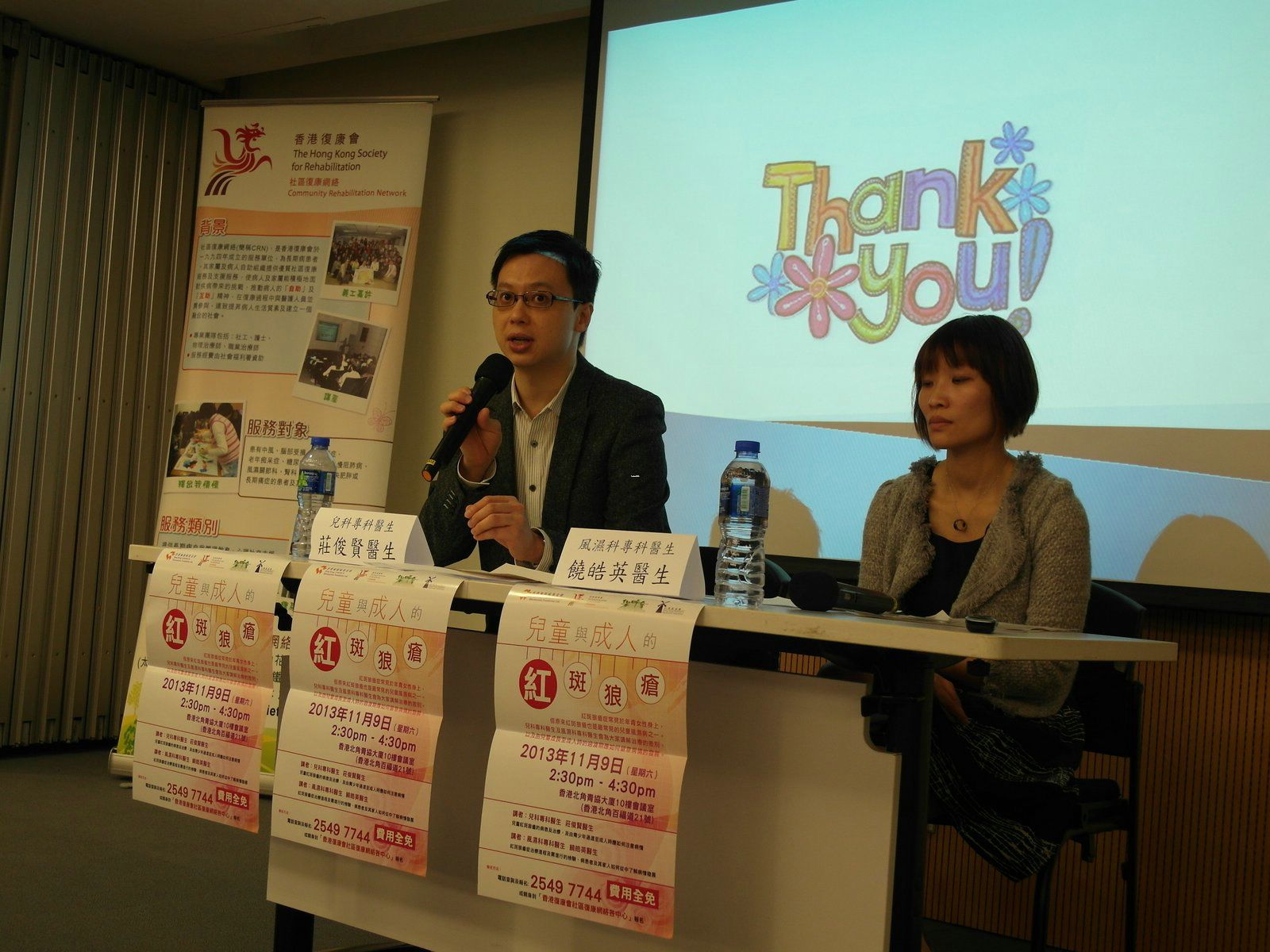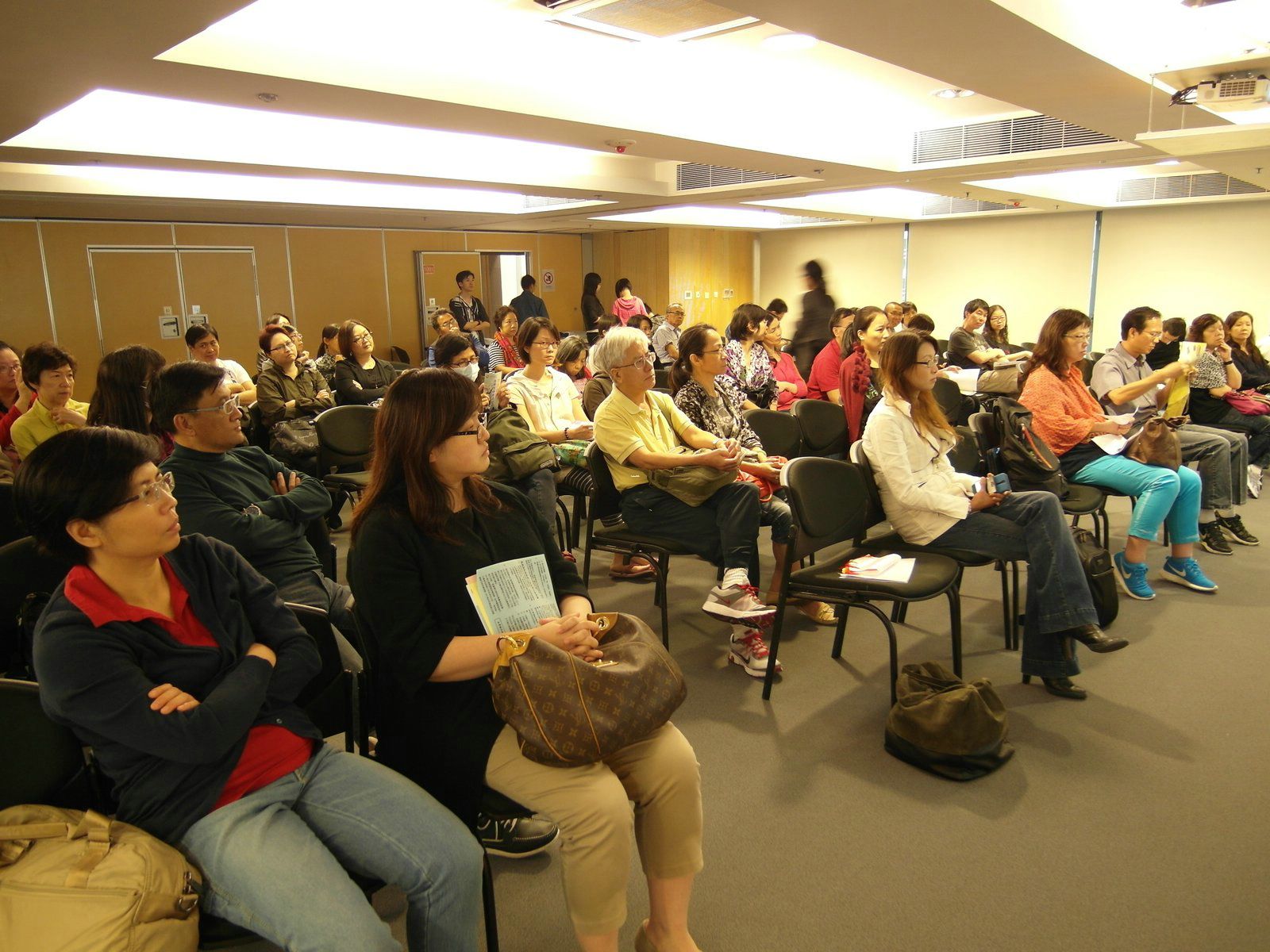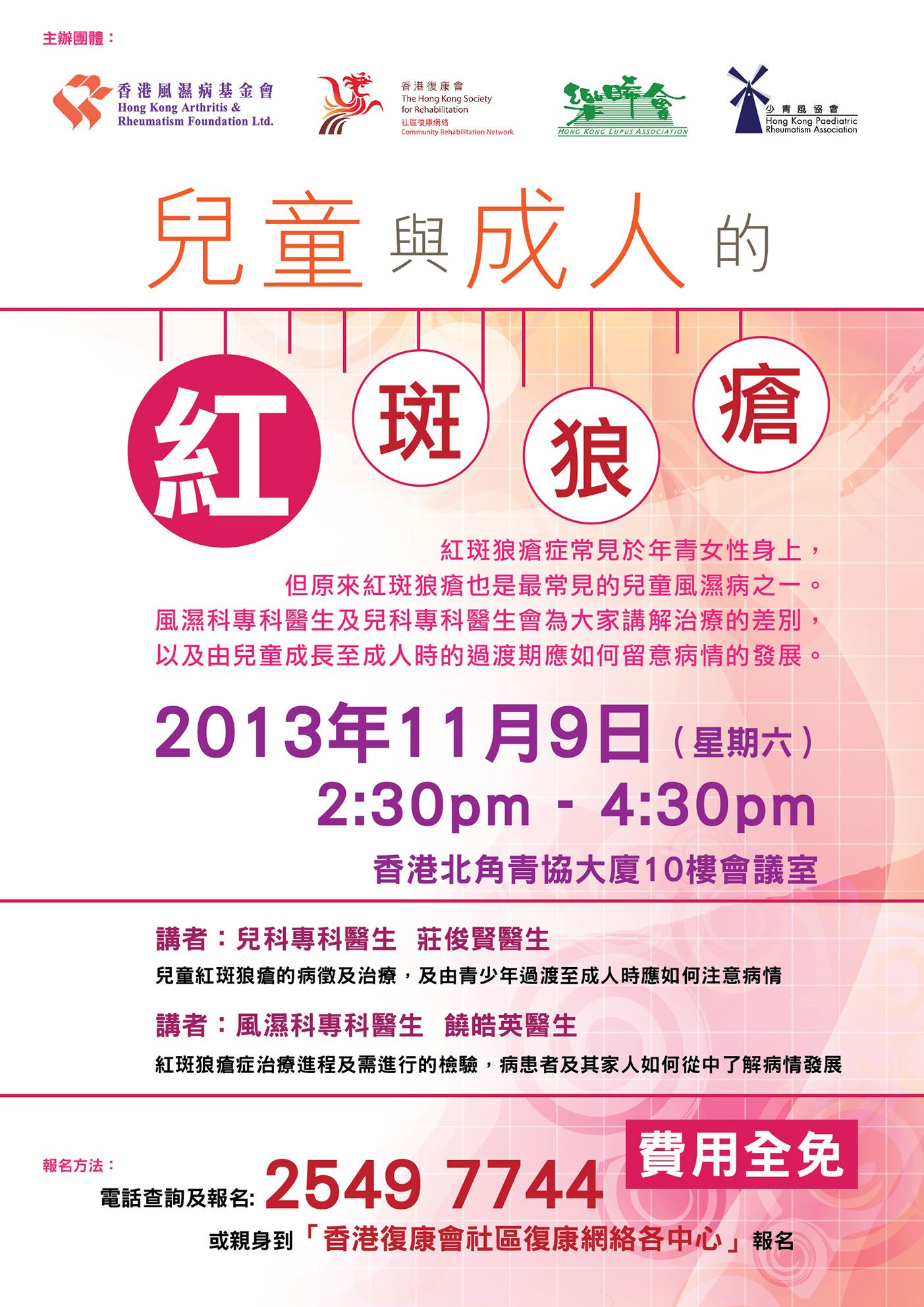
JSLE & SLE Talk
9th November 2013
JSLE & SLE Talk was taken part in Room 101-103, 10/F, The Hong Kong Federation of Youth Groups Building on 9th November 2013. The talk aimed to enhance people’s understanding of the diagnosis and treatment of JSLE and SLE. There were 74 participants in total.
The talk was started by Dr. CHONG Chun Yi, a specialist in Paediatrics, to introduce the background information of JSLE. The hereditary factors and possibility of infection were explained. Photos were used to illustrate the common symptoms of SLE including malar rash and Raynaud phenomenon etc. which helped the participants to distinguish the symptoms. In general, SLE and JSLE were similar except rapider pathological changes and more severe complications in kidneys were found in children. Thus, it was very important to maintain treatment and regular checking. Moreover, diagnosis and treatment of the disease were introduced in details. According to the American College of Rheumatology, there were 11 criteria for classification of the disease. If four criteria were observed, it could be identified as SLE. Dr. CHONG stated the disease could not be completely cured at this moment. Yet, suitable treatment could control the condition well and prevent organ impartment. Dr. CHONG shared the matter like intake of food, physical exercises and inoculation needing attention and urged the parents to be aware of their children’s conditions.
Apart from this, the talk was continued by Dr. JAO, a specialist in Rheumatology, further introduced the causes and symptoms of SLE. 6 more criteria on immunity were explained. Since most patients of SLE were female, they would usually face the problem of marriage, contraception and pregnancy. Dr. JAO analyzed the pros and cons of different methods and reminded the participants of the risk of contraceptive drugs and intrauterine device. Furthermore, the live-birth rate in SLE patients was increasing in spite of the medical advances. Patients should complete all the assessments, both physically and mentally, and understand the risk of having pregnancy. At last, Dr. JAO reaffirmed patients should discuss with their medical personnel as soon as if they wished to have a baby.
Most participants were interested in the inoculation and mediations for SLE. Dr. CHONG and Dr. JAO answered their enquiries patiently. They were satisfied with the arrangement and content of the talk and hoped to join these activities in the future.

